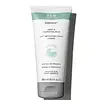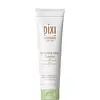What's inside
What's inside
 Key Ingredients
Key Ingredients

No key ingredients
 Benefits
Benefits

 Concerns
Concerns

 Ingredients Side-by-side
Ingredients Side-by-side

Water
Skin ConditioningCetearyl Ethylhexanoate
EmollientCetearyl Alcohol
EmollientCaprylic/Capric Triglyceride
MaskingSesamum Indicum Seed Oil
EmollientButyrospermum Parkii Butter
Skin ConditioningMyristyl Myristate
EmollientGlycerin
HumectantCetearyl Glucoside
EmulsifyingRibes Nigrum Seed Oil
EmollientHelianthus Annuus Seed Oil
EmollientSodium Stearoyl Glutamate
CleansingOryzanol
Skin ConditioningBisabolol
MaskingMyristyl Laurate
Hippophae Rhamnoides Fruit Extract
Skin ConditioningCalendula Officinalis Flower Extract
MaskingTocopherol
AntioxidantXanthan Gum
EmulsifyingPhenoxyethanol
PreservativeCitrus Nobilis Peel Oil
MaskingAnthemis Nobilis Flower Oil
MaskingSodium Dehydroacetate
PreservativeCinnamomum Camphora Linalooliferum Leaf Oil
PerfumingPelargonium Graveolens Flower Oil
MaskingFoeniculum Vulgare Fruit Extract
EmollientEthylhexylglycerin
Skin ConditioningGlucose
HumectantParfum
MaskingRosmarinus Officinalis Leaf Extract
AntimicrobialCitric Acid
BufferingCitronellol
PerfumingLimonene
PerfumingLinalool
PerfumingWater, Cetearyl Ethylhexanoate, Cetearyl Alcohol, Caprylic/Capric Triglyceride, Sesamum Indicum Seed Oil, Butyrospermum Parkii Butter, Myristyl Myristate, Glycerin, Cetearyl Glucoside, Ribes Nigrum Seed Oil, Helianthus Annuus Seed Oil, Sodium Stearoyl Glutamate, Oryzanol, Bisabolol, Myristyl Laurate, Hippophae Rhamnoides Fruit Extract, Calendula Officinalis Flower Extract, Tocopherol, Xanthan Gum, Phenoxyethanol, Citrus Nobilis Peel Oil, Anthemis Nobilis Flower Oil, Sodium Dehydroacetate, Cinnamomum Camphora Linalooliferum Leaf Oil, Pelargonium Graveolens Flower Oil, Foeniculum Vulgare Fruit Extract, Ethylhexylglycerin, Glucose, Parfum, Rosmarinus Officinalis Leaf Extract, Citric Acid, Citronellol, Limonene, Linalool
Water
Skin ConditioningMyristic Acid
CleansingGlycerin
HumectantPotassium Hydroxide
BufferingPalmitic Acid
EmollientGlyceryl Stearate
EmollientGlycol Distearate
EmollientStearic Acid
CleansingSorbitan Olivate
EmulsifyingJojoba Esters
EmollientPEG-100 Stearate
Cocamidopropyl Betaine
CleansingPhenoxyethanol
PreservativePanthenol
Skin ConditioningHydroxyethylcellulose
Emulsion StabilisingSodium Chloride
MaskingBifida Ferment Lysate
Skin ConditioningCocos Nucifera Fruit Extract
EmollientAvena Strigosa Seed Extract
Skin ConditioningOriganum Vulgare Leaf Extract
Skin ConditioningChamaecyparis Obtusa Leaf Extract
Skin ConditioningSalix Alba Bark Extract
AstringentLactobacillus/Soybean Ferment Extract
Skin ConditioningPortulaca Oleracea Extract
Skin ConditioningCinnamomum Cassia Bark Extract
MaskingScutellaria Baicalensis Root Extract
AstringentLecithin
EmollientParfum
MaskingAllantoin
Skin ConditioningEthylhexylglycerin
Skin ConditioningDisodium EDTA
Potassium Sorbate
PreservativeCitric Acid
BufferingButylene Glycol
HumectantWater, Myristic Acid, Glycerin, Potassium Hydroxide, Palmitic Acid, Glyceryl Stearate, Glycol Distearate, Stearic Acid, Sorbitan Olivate, Jojoba Esters, PEG-100 Stearate, Cocamidopropyl Betaine, Phenoxyethanol, Panthenol, Hydroxyethylcellulose, Sodium Chloride, Bifida Ferment Lysate, Cocos Nucifera Fruit Extract, Avena Strigosa Seed Extract, Origanum Vulgare Leaf Extract, Chamaecyparis Obtusa Leaf Extract, Salix Alba Bark Extract, Lactobacillus/Soybean Ferment Extract, Portulaca Oleracea Extract, Cinnamomum Cassia Bark Extract, Scutellaria Baicalensis Root Extract, Lecithin, Parfum, Allantoin, Ethylhexylglycerin, Disodium EDTA, Potassium Sorbate, Citric Acid, Butylene Glycol
Ingredients Explained
These ingredients are found in both products.
Ingredients higher up in an ingredient list are typically present in a larger amount.
Citric Acid is an alpha hydroxy acid (AHA) naturally found in citrus fruits like oranges, lemons, and limes.
Like other AHAs, citric acid can exfoliate skin by breaking down the bonds that hold dead skin cells together. This helps reveal smoother and brighter skin underneath.
However, this exfoliating effect only happens at high concentrations (20%) which can be hard to find in cosmetic products.
Due to this, citric acid is usually included in small amounts as a pH adjuster. This helps keep products slightly more acidic and compatible with skin's natural pH.
In skincare formulas, citric acid can:
While it can provide some skin benefits, research shows lactic acid and glycolic acid are generally more effective and less irritating exfoliants.
Most citric acid used in skincare today is made by fermenting sugars (usually from molasses). This synthetic version is identical to the natural citrus form but easier to stabilize and use in formulations.
Read more about some other popular AHA's here:
Learn more about Citric AcidEthylhexylglycerin (we can't pronounce this either) is commonly used as a preservative and skin softener. It is derived from glyceryl.
You might see Ethylhexylglycerin often paired with other preservatives such as phenoxyethanol. Ethylhexylglycerin has been found to increase the effectiveness of these other preservatives.
Glycerin is already naturally found in your skin. It helps moisturize and protect your skin.
A study from 2016 found glycerin to be more effective as a humectant than AHAs and hyaluronic acid.
As a humectant, it helps the skin stay hydrated by pulling moisture to your skin. The low molecular weight of glycerin allows it to pull moisture into the deeper layers of your skin.
Hydrated skin improves your skin barrier; Your skin barrier helps protect against irritants and bacteria.
Glycerin has also been found to have antimicrobial and antiviral properties. Due to these properties, glycerin is often used in wound and burn treatments.
In cosmetics, glycerin is usually derived from plants such as soybean or palm. However, it can also be sourced from animals, such as tallow or animal fat.
This ingredient is organic, colorless, odorless, and non-toxic.
Glycerin is the name for this ingredient in American English. British English uses Glycerol/Glycerine.
Learn more about GlycerinParfum is a catch-all term for an ingredient or more that is used to give a scent to products.
Also called "fragrance", this ingredient can be a blend of hundreds of chemicals or plant oils. This means every product with "fragrance" or "parfum" in the ingredients list is a different mixture.
For instance, Habanolide is a proprietary trade name for a specific aroma chemical. When used as a fragrance ingredient in cosmetics, most aroma chemicals fall under the broad labeling category of “FRAGRANCE” or “PARFUM” according to EU and US regulations.
The term 'parfum' or 'fragrance' is not regulated in many countries. In many cases, it is up to the brand to define this term.
For instance, many brands choose to label themselves as "fragrance-free" because they are not using synthetic fragrances. However, their products may still contain ingredients such as essential oils that are considered a fragrance by INCI standards.
One example is Calendula flower extract. Calendula is an essential oil that still imparts a scent or 'fragrance'.
Depending on the blend, the ingredients in the mixture can cause allergies and sensitivities on the skin. Some ingredients that are known EU allergens include linalool and citronellol.
Parfum can also be used to mask or cover an unpleasant scent.
The bottom line is: not all fragrances/parfum/ingredients are created equally. If you are worried about fragrances, we recommend taking a closer look at an ingredient. And of course, we always recommend speaking with a professional.
Learn more about ParfumPhenoxyethanol is a preservative that has germicide, antimicrobial, and aromatic properties. Studies show that phenoxyethanol can prevent microbial growth. By itself, it has a scent that is similar to that of a rose.
It's often used in formulations along with Caprylyl Glycol to preserve the shelf life of products.
Water. It's the most common cosmetic ingredient of all. You'll usually see it at the top of ingredient lists, meaning that it makes up the largest part of the product.
So why is it so popular? Water most often acts as a solvent - this means that it helps dissolve other ingredients into the formulation.
You'll also recognize water as that liquid we all need to stay alive. If you see this, drink a glass of water. Stay hydrated!
Learn more about Water